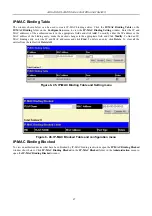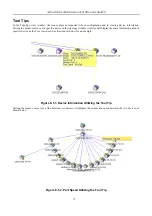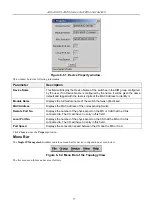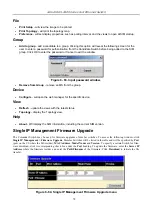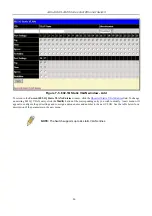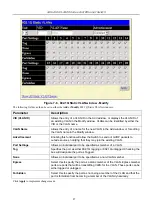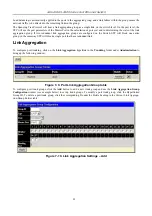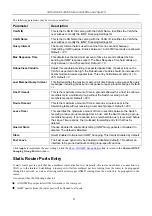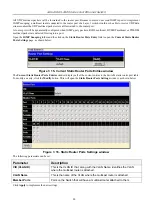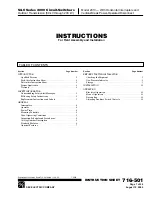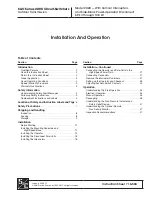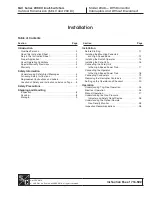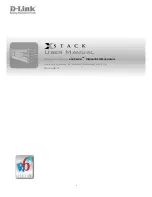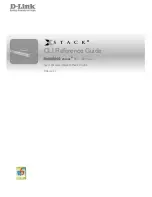
xStack DGS-3400 Series Fast Ethernet Switch
A VLAN is a collection of end nodes grouped by logic instead of physical location. End nodes that frequently
communicate with each other are assigned to the same VLAN, regardless of where they are physically on the network.
Logically, a VLAN can be equated to a broadcast domain, because broadcast packets are forwarded to only members of the
VLAN on which the broadcast was initiated.
Notes about VLANs on the DGS-3400 Series
No matter what basis is used to uniquely identify end nodes and assign these nodes VLAN membership, packets cannot
cross VLANs without a network device performing a routing function between the VLANs.
The DGS-3400 Series supports IEEE 802.1Q VLANs and Port-Based VLANs. The port untagging function can be used to
remove the 802.1Q tag from packet headers to maintain compatibility with devices that are tag-unaware.
The Switch's default is to assign all ports to a single 802.1Q VLAN named "default."
The "default" VLAN has a VID = 1.
The member ports of Port-based VLANs may overlap, if desired.
IEEE 802.1Q VLANs
Some relevant terms:
Tagging
- The act of putting 802.1Q VLAN information into the header of a packet.
Untagging
- The act of stripping 802.1Q VLAN information out of the packet header.
Ingress port
- A port on a switch where packets are flowing into the Switch and VLAN decisions must be made.
Egress port
- A port on a switch where packets are flowing out of the Switch, either to another switch or to an end station,
and tagging decisions must be made.
IEEE 802.1Q (tagged) VLANs are implemented on the Switch. 802.1Q VLANs require tagging, which enables them to
span the entire network (assuming all switches on the network are IEEE 802.1Q-compliant).
VLANs allow a network to be segmented in order to reduce the size of broadcast domains. All packets entering a VLAN
will only be forwarded to the stations (over IEEE 802.1Q enabled switches) that are members of that VLAN, and this
includes broadcast, multicast and unicast packets from unknown sources.
VLANs can also provide a level of security to your network. IEEE 802.1Q VLANs will only deliver packets between
stations that are members of the VLAN.
Any port can be configured as either tagging or untagging. The untagging feature of IEEE 802.1Q VLANs allows VLANs
to work with legacy switches that don't recognize VLAN tags in packet headers. The tagging feature allows VLANs to
span multiple 802.1Q-compliant switches through a single physical connection and allows Spanning Tree to be enabled on
all ports and work normally.
The IEEE 802.1Q standard restricts the forwarding of untagged packets to the VLAN the receiving port is a member of.
The main characteristics of IEEE 802.1Q are as follows:
•
•
•
•
•
•
•
•
Assigns packets to VLANs by filtering.
Assumes the presence of a single global spanning tree.
Uses an explicit tagging scheme with one-level tagging.
802.1Q VLAN Packet Forwarding
Packet forwarding decisions are made based upon the following three types of rules:
Ingress rules - rules relevant to the classification of received frames belonging to a VLAN.
Forwarding rules between ports - decides whether to filter or forward the packet.
Egress rules - determines if the packet must be sent tagged or untagged.
81
Summary of Contents for xStack DGS-3427
Page 213: ...202...
Page 224: ...213 D Link D Link D Link D Link 095 744 00 99 http www dlink ru email support dlink ru...
Page 227: ...216...
Page 243: ...232 Ver 1 00...
Page 246: ......

